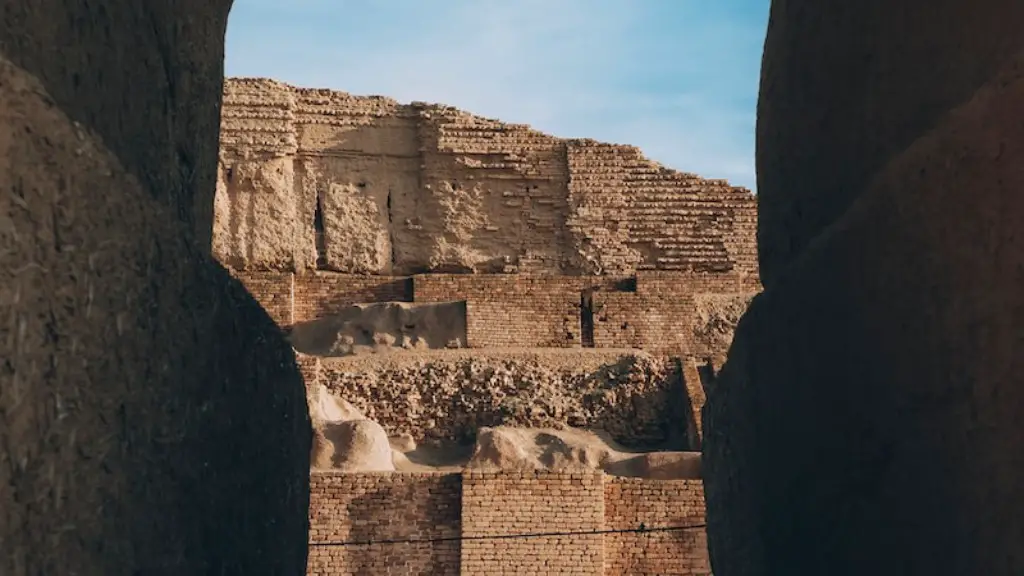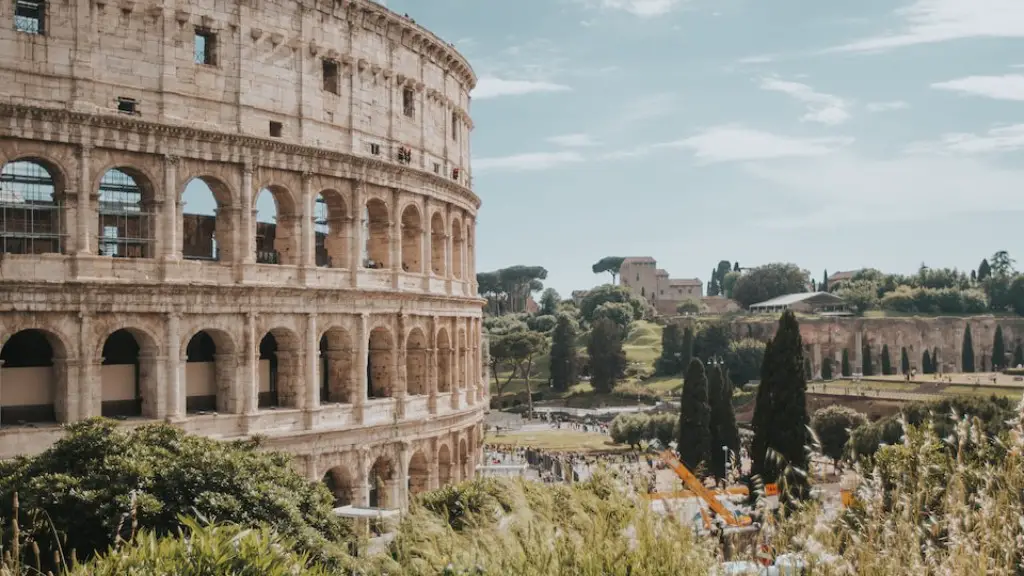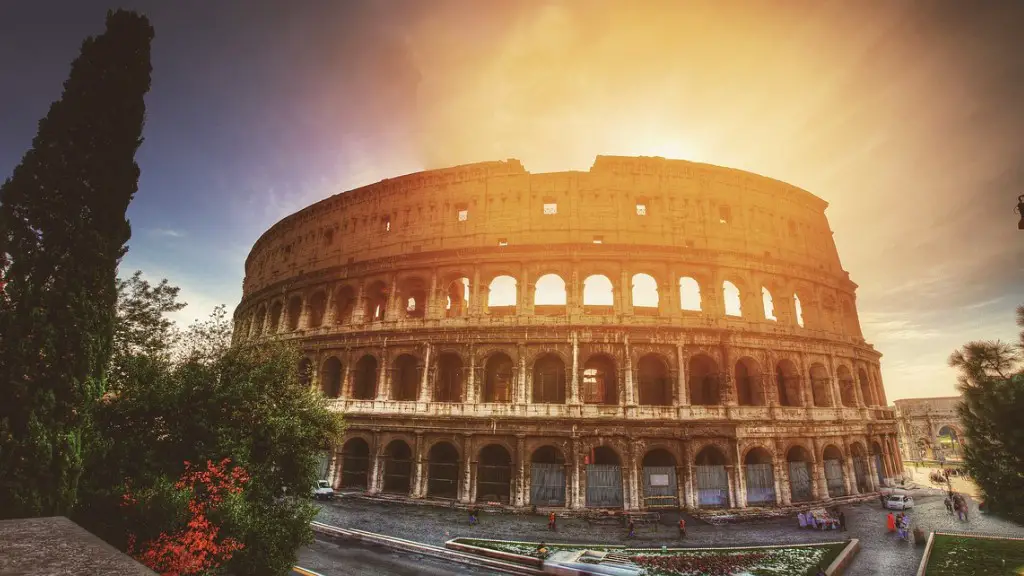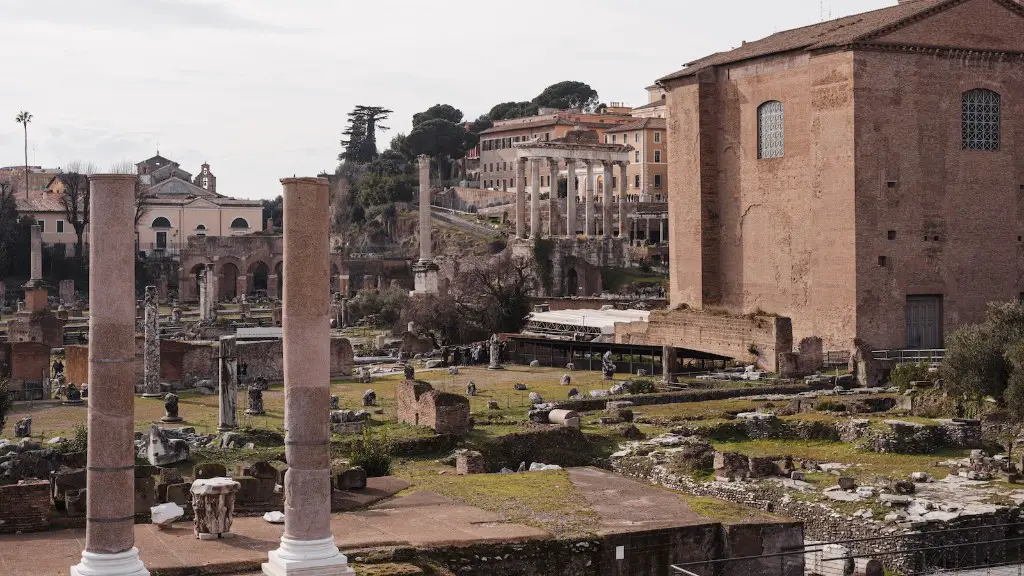The Roman Republic was founded in 509 BC, and grew to become one of the largest empires in history. The Roman Empire reached its height under Emperor Trajan, who ruled from 98-117 AD. During the Republic and early Empire, Roman law was based on the Twelve Tables, a set of laws compiled in 449 BC. These laws shows us that ancient Romans were a people who valued family, religion, and personal property. They also had a strong sense of justice, and a belief in democracy.
The laws in ancient Rome were designed to protect the interests of the ruling class and maintain social order. They were based on the principle of hierarchy in which people were divided into classes based on their wealth and power. The laws were very strict and enforced by the government’s institutions of justice, such as the courts and the police. There was little protection for the rights of individuals, and the death penalty was used for many crimes. Life in ancient Rome was thus shaped by the laws, which created a society that was highly stratified and controlled.
What is important about Roman laws?
Roman law was the legal system of the Roman Republic and Empire and forms the basis for civil law, the most widely used legal system today. Roman law is characterized by its focus on codification, or the collection and compilation of laws into a code, which was a novel concept at the time. The code was compiled by the order of the emperor Justinian I in the 6th century CE and became known as the Justinian Code. The Justinian Code was the basis for civil law in many countries, including most of Western Europe and many parts of the world. The historical importance of Roman law is reflected by the continued use of Latin legal terminology in many legal systems influenced by it, including common law.
The Twelve Tables were a set of laws created in ancient Rome in 451 and 450 BCE. They were the beginning of a new approach to laws which were now passed by government and written down so that all citizens might be treated equally before them.
What are 3 important contributions of Roman law
Roman law and the Roman Constitution have had a lasting impact on the world. Many of the concepts that they developed, like checks and balances, vetoes, separation of powers, term limits, and regular elections, are still used today in modern democratic governments. These concepts have helped to create a more stable and just society, and we are still benefitting from them today.
The Twelve Tables were a set of laws that were written in 449 BC in order to provide social protection and civil rights for both the patricians and plebeians. These laws were an early understanding of some key concepts such as justice, equality, and punishment. Although legal reform occurred soon after the implementation of the Twelve Tables, these ancient laws were a key step in providing protection for all citizens.
Why was it so important for laws to be written in ancient Rome?
The Twelve Tables were a written record of the Roman law that was created in order to make the law more accessible to the plebeians and to protect them from the abuse of power by the patricians. This was a significant development in Roman law and helped to level the playing field between the two classes.
The legal system of the ancient Romans is based on the traditional law and the legislation of the city of Rome. It includes written and unwritten law, and in form comprises legislation of the assemblies, resolves of the senate, enactments of the emperors, edicts of the praetors, writings of the jurisconsults, and more.
What did rule of law mean to Romans?
The rule of law was a major part of the Roman legal system and it ensured that everyone was treated fairly and equally. This was a very important part of the Roman legal system and it helped to keep the peace and order in society.
Roman law is the foundation of modern legal culture. The Civil law system is based on the late Roman law. The most distinctive feature of the Civil law system is that its core principles are codified into a system. This system serves as the primary source of law.
How did Roman laws influence democracy
Roman law was based on the belief that everyone was equal before the law. This principle was adopted by the framers of the United States Constitution and is evident in the Bill of Rights. The concept of innocent until proven guilty is also derived from Roman law. This principle ensures that people are not unjustly accused or convicted of a crime. The burden of proof rests with the accuser in order to protect the accused from false charges. Lastly, Roman law dictated that unfair or unreasonable laws could be set aside. This is an important check on the power of the government and ensures that the people can have a say in the laws that govern them.
The Roman legal system was based on the Twelve Tables, which were a set of laws that were created by the Senate and then posted for the people to see. The system included a criminal court system with lawyers and juries so people accused of crimes could defend themselves. Witnesses could be called to give witness testimony.
Why was the law of Twelve Tables important to the Romans?
The Twelve Tables were a significant milestone in the history of Roman law and government. They were the first codified legal code in the Roman Republic, enacted in 450 BCE. The Twelve Tables attempted to bridge the social divide between patricians and plebeians, and provided for a degree of equality under the law for all Roman citizens. The Twelve Tables were an important step in the development of the Roman legal system, and laid the foundation for the later development of Roman civil law.
The Twelve Tables were a codified and listed set of rules citizens had to follow, and limits on the powers the government had over them. They were created following a Secessio Plebis, which was a withdrawal of the plebeians from Rome. The Twelve Tables were very simply much like the American Constitution and Bill of Rights.
How would modern laws compare to the Twelve Tables of Rome
The Twelve Tables is considered as the foundation of Modern laws. It acknowledged the right of individuals, explained courts and trial procedures for crimes committed, and outlined the general laws of society. All these aspects are still applicable in today’s legal system, which makes The Twelve Tables a relevant and important document.
The rule of law is a principle that everyone is accountable to the law, and that the law is public, enforced equally, and independently adjudicated. This principle is consistent with international human rights principles.
What was the purpose of rule of law?
Good governance is essential for any government if it wants to be effective and respected by its people. Good governance includes having good laws and institutions in place to ensure accountability, stability, equality, and access to justice for all. This ultimately leads to respect for human rights and the environment. Good governance also helps lower levels of corruption and instances of violent conflict.
Though it has been thousands of years since the Roman Empire flourished, we can still see evidence of it in our art, architecture, technology, literature, language, and law. From bridges and stadiums to books and the words we hear every day, the ancient Romans have left their mark on our world.
Conclusion
The ancient Roman laws show that life in Rome was governed by a strict set of rules and regulations. This helped to maintain order and stability in the city, and ensured that everyone was treated fairly and equally. The laws also showed that the Roman government was very efficient in enforcing these rules, and that anyone who broke them would be punished severely.
The ancient Roman laws show that life in ancient Rome was a far cry from the life we know today. The laws were created to keep order and maintain power, and they reveal a society that was very different from our own.




